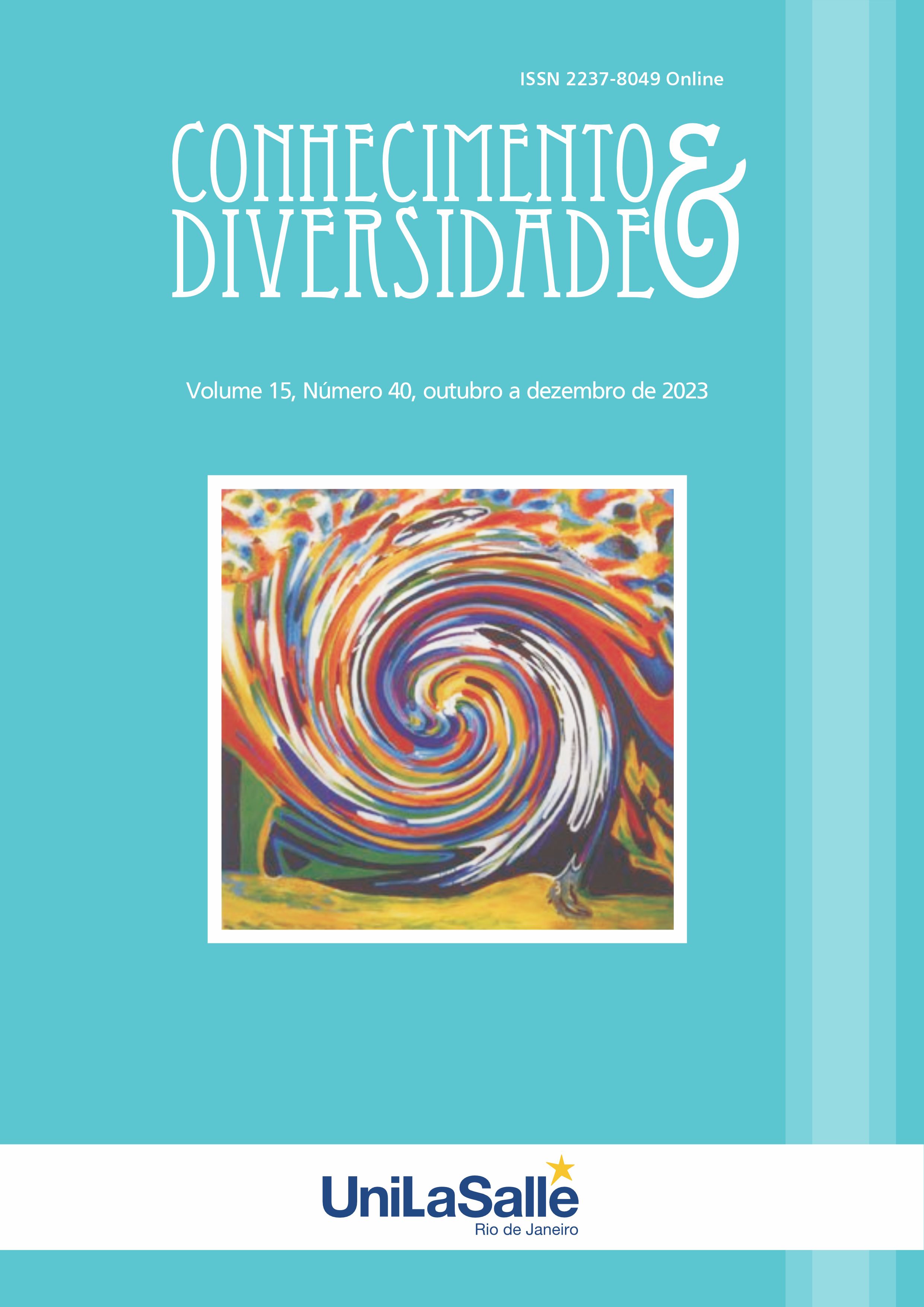TEACHING AVIATION ENGLISH
ENHANCING TRANSLATION SKILLS THROUGH THE CONTENT AND LANGUAGE INTEGRATED LEARNING METHOD APPLICATION
DOI:
https://doi.org/10.18316/rcd.v15i40.11304Palabras clave:
Aviation English, Content and language integrated learning, Experimental methodology, Subject matter knowledge, Translation studentsResumen
Teaching aviation translators involves the simultaneous provision of broad branch competence and narrow specialization. This study is aimed to test whether the application of the Content and Language Integrated Learning Method (CLIM) is effective while teaching Aviation English and enhancing translation skills at the aviation university. The experimental study was conducted within the framework of an elective course designed as an English language program with a professional focus on "Translation in the Aviation Industry" for future graduates majoring in Translation. The experiment involved 95 students, with one academic group designated as the experimental group (n = 44) and the second as the control group (n = 51). The study followed a pretest-posttest experimental design. In the pretest stage, the homogeneity of CLIM and non-CLIM groups was statistically proved by the χ2 Pearson Correlation Coefficient. The experimental group received the CLIM methodology, while the control group was taught by a traditional approach. The post-test took into account both linguistic and content-related learning outcomes aimed at improving English proficiency in the aviation-oriented and translation direction within the CLIM and non-CLIM research groups. The research findings demonstrated that experimental group had significantly outperformed the control group during the final test. Teaching Aviation English and enhancing translation skills through the application of the CLIM method which encompassed aviation podcasts, subject matter videos, professional literature overview, stakeholders’ involvement, and engagement in the aviation environment, are effective.
Citas
Bennett, N., Dunne, E. & Carré, C. (1999). Patterns of core and generic skill provision in higher education. Higher Education, 37, 71-93. Available at: https://doi.org/10.1023/A:1003451727126
Brumfit, C. J., & Johnson, K. (1979). The communicative approach to language teaching. Oxford University Press.
Crawford, L. (1993). Language and literacy learning in multicultural classrooms. Allyn & Bacon.
Dalton-Puffer, C.H. & Nikula, T. (Eds). (2006). Current research on CLIL. Special issue of VIEW (Vienna English Working Papers), 15(3).
Dib, M., & Addou S. A. (n.d.). Teaching Aviation English through content language integrated learning: Air traffic controllers at Zenata airport as a case of the point. Internet journal for cultural studies, 23. Available at: https://www.inst.at/trans/23/455-2/
Estival, D., Farris, C., Molesworth B. (2016). Aviation English. A lingua franca for pilots and air traffic controllers. Routledge.
European Commission, Directorate-General for Education, Youth, Sport and Culture. (2006). Content and Language Integrated Learning (CLIL) at school in Europe. Publications Office of the European Union. https://aulaintercultural.org/2006/07/13/content-and-language-integrated-learning-clil-at-school-in-europe-2/
Fallows, S., & Steven, С. (2000). Integrating key skills in higher education: employability, transferable skills and learning for life. Routledge.
Gollin-Kies, S., Hall D. R., & Moore S. H. (2015). Language for specific purposes. Palgrave Macmillan. Available at: https://doi.org/10.1057/9781137500762
Grognet, A. G., & Crandall, J. (1982). Competency-based curricula in adult ESL. ERIC/CLL New Bulletin, 6, 3-4.
Karimi, P., Lotfi, A. R., & Biria, R. (2019). Enhancing pilot’s Aviation English learning, attitude and motivation through the application of content and language integrated learning. International Journal of Instruction, 12(1), 751-766. Available at: https://files.eric.ed.gov/fulltext/EJ1201326.pdf
Klein, J. (2005). Integrative learning and interdisciplinary studies. Peer Review, 7(4), 8-10. Available at: https://www.academia.edu/755632/Integrative_learning_and_interdisciplinary_studies
Kovtun, O. V., Pylypchuk, M. L., Rudina, M. V., & Sydorenko, S. I. (2021). Audiovisual material as a means of forming aviation subject matter competence of aviation translation students. Information Technologies and Learning Tools, 83(3), 176-191. Available at: https://doi.org/10.33407/itlt.v83i3.4190
Kovtun, O., Khaidari, N., Harmash, T., Melnyk, N., & Gnatyuk, S. (2019). Communication in civil aviation: Linguistic analysis for educational purposes. In CEUR Workshop Proceedings (Vol. 2588). CEUR-WS. Available at: https://ceur-ws.org/Vol-2588/paper40.pdf
Krashen, S. D. (1988). Second language acquisition and second language learning. Prentice-Hall International.
Kukovec, A. (2008). Teaching Aviation English and radiotelephony communication in line with the newly established International Civil Aviation Organization language proficiency requirements for pilots. Inter Alia, 1, 127-137. Available at: http://www.sdutsj.edus.si/InterAlia/2008/Kukovec.pdf
Marsh, D. (2002). CLIL/EMILE – The European dimension: actions, trends and foresight potential. University of Jyväskylä. Available at: https://jyx.jyu.fi/handle/123456789/47616
McDougald, J., & Pissarello, D. (2020). Content and language integrated learning: In-service teachers’ knowledge and perceptions before and after a professional development program. Íkala, Revista de Lenguaje y Cultura, 25(2), 353-372. Available at: https://doi.org/10.17533/udea.ikala.v25n02a03
Potapenko, L. (2014). Content and language integrated learning: Theoretical sketches. Financial Space, 4(16), 211-215. Available at: https://fp.cibs.ubs.edu.ua/index.php/fp/article/view/333/331
Ragan, P. H. (1996). Aviation English: an introduction. Journal of Aviation/Aerospace Education & Research, 7(2), 25-36. Available at: https://doi.org/10.15394/jaaer.1997.1189
Social Science Statistics (n.d.). Pearson correlation coefficient calculator. Available at: https://www.socscistatistics.com/tests/pearson/
Stitt, R. (2016, February 8). The importance of subject matter expertise in translation. Ulatus. Available at: https://ulatus.com/translation-blog/the-importance-of-subject-matter-expertise-in-translation/
Swan, M. (19851). A critical look at the communicative approach (1). ELT Journal, 39(1), 2-12. Available at: https://doi.org/10.1093/elt/39.1.2
Swan, M. (19852). A critical look at the communicative approach (2). ELT Journal, 39(2), 76-87. Available at: https://doi.org/10.1093/elt/39.2.76
Descargas
Publicado
Número
Sección
Licencia
Derechos de autor 2023 Maryna Pylypchuk, Olena Kovtun, Maryna Rudina, Oksana Poliakova, Nataliia Khaidari

Esta obra está bajo una licencia internacional Creative Commons Atribución 4.0.
Tal como recomienda el Public Knowledge Project, RCD adopta para sus artículos una licencia CREATIVE COMMONS: Attribution CC BY 4.0
Esta licencia permite que otros distribuyan, remezclen, adapten y desarrollen su obra, incluso con fines comerciales, siempre que le atribuyan a usted el mérito de la creación original.
Esta es la licencia más adecuada que se ofrece.
Recomendado para la máxima difusión y utilización de los materiales bajo licencia.



